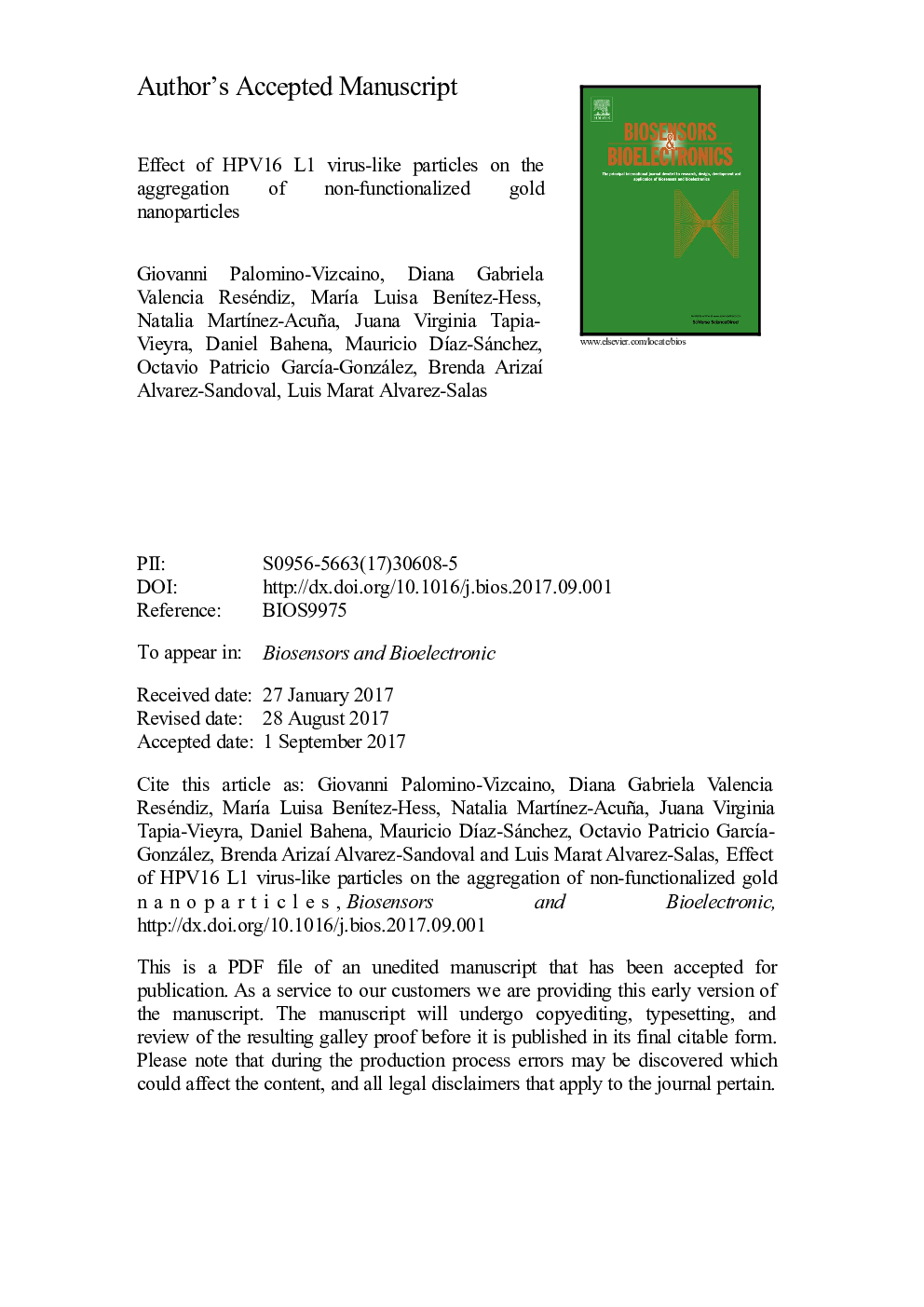| Article ID | Journal | Published Year | Pages | File Type |
|---|---|---|---|---|
| 5030780 | Biosensors and Bioelectronics | 2018 | 32 Pages |
Abstract
Colorimetric assays based on gold nanoparticles (GNPs) are of considerable interest for diagnostics because of their simplicity and low-cost. Nevertheless, a deep understanding of the interaction between the GNPs and the intended molecular target is critical for the development of reliable detection technologies. The present report describes the spontaneous interaction between HPV16 L1 virus-like particles (VLPs) and non-functionalized GNPs (nfGNPs) resulting in the inhibition of nfGNPs salt-induced aggregation and the stabilization of purified VLPs. Ionic-competition experiments suggested that the nature of nfGNPs-VLPs interaction is non-covalent. Adsorption of an RNA aptamer on nfGNPs surface showed an additive aggregation-inhibitory effect. The use of mutant VLPs confirmed that the interaction nfGNPs-VLPs is not mediated by the opposing superficial electrostatic charges, suggesting that non-electrostatic forces participate in the arrangement of nfGNPs on the VLPs surface. Competition experiments using increasing ethanol concentrations on nfGNPs-VLPs complexes suggested hydrophobic interactions as the main stabilizing force. Therefore, the nfGNPs-VLPs interaction described here should facilitate the development of adsorption assays based on nfGNPs for HPV detection and cervical cancer prevention.
Keywords
Related Topics
Physical Sciences and Engineering
Chemistry
Analytical Chemistry
Authors
Giovanni Palomino-Vizcaino, Diana Gabriela Valencia Reséndiz, MarÃa Luisa BenÃtez-Hess, Natalia MartÃnez-Acuña, Juana Virginia Tapia-Vieyra, Daniel Bahena, Mauricio DÃaz-Sánchez, Octavio Patricio GarcÃa-González, Brenda Arizaà Alvarez-Sandoval,
